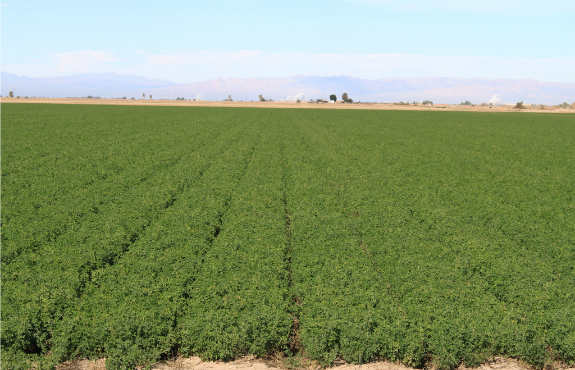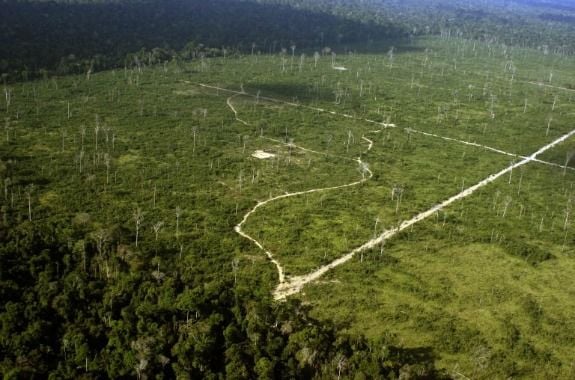Is the Livestock Industry Destroying the Planet?
For the earth’s sake, maybe it’s time we take a good, hard look at our dietary habits
/https://tf-cmsv2-smithsonianmag-media.s3.amazonaws.com/filer/20120801122032VeggieCowsSMALL.jpg)
For the epicurean traveler, discovering new landscapes also means discovering new foods. And no doubt, new tasting experiences are one of the highlights of going places, yet I’m going to suggest something a bit radical, yet simple—that perhaps we all consider abstaining, at least sometimes, from dishes containing either meat or dairy, even while we’re abroad in new lands with exotic cuisines to explore. Don’t panic at the suggestion—just listen: An abundance of science analyzing the impacts on the earth of livestock farming has concluded that humanity’s appetite for meat and dairy products is having serious environmental consequences. Livestock species contribute directly and indirectly to deforestation, water pollution, air pollution, greenhouse gases, global warming, desertification, erosion and human obesity, and virtually anywhere you go in the world, the damage done by ruminants, pigs and poultry, and those who grow feed crops for them, is visible on the land. Dry and scrubby Greece, once a nation of woodlands, has gone to the goats. In Brazil, forests are falling before the advance of soybean fields, cultivated largely as beef fodder. In New Zealand, the banks of wild streams are frequently found trampled and muddied by grazers.
Other ecological problems associated with raising livestock are less obvious to the eye—like loss of biodiversity. On parts of the Great Plains, cows, and the fields of grain they eat, have replaced pronghorn antelope and bison. Livestock ranchers worldwide have participated heavily in the extermination of wild predators. In California, overuse of river water for agricultural use, including a million acres of water-intensive alfalfa (the state’s highest-acreage crop, used for feeding animals), has contributed to the long-term decline of wild salmon runs. Sixty percent of the state’s alfalfa fields lie in the San Joaquin Valley, ground zero in the water wars between farmers and salmon fishermen. And the mighty, man-size totuava, a Mexican fish species that once spawned in huge swarms in the Colorado River delta, has just about vanished partly because the Colorado barely reaches the Sea of Cortez anymore (remember in Into the Wild when vagabond Chris McCandless was unable to find the sea as he paddled a canoe downstream through the Colorado River delta?). Much of the Colorado’s flow is diverted to the Imperial Valley, a regional king of alfalfa hay production. Most California-grown alfalfa is fed to dairy cows—meaning, sadly, that the production of milk and of California’s acclaimed cheeses may be as problematic as raising meat.

The global scope of the livestock issue is huge. A 212-page online report published by the United Nations Food and Agriculture Organization says 26 percent of the earth’s terrestrial surface is used for livestock grazing. One-third of the planet’s arable land is occupied by livestock feed crop cultivation. Seventy percent of Brazil’s deforested land is used as pasture, with feed crop cultivation occupying much of the remainder. And in Botswana, the livestock industry consumes 23 percent of all water used. Globally, 18 percent of greenhouse gas emissions can be attributed to the livestock industry—more than is produced by transportation-related sources. And in the United States, livestock production is responsible for 55 percent of erosion, 37 percent of all applied pesticides and 50 percent of antibiotics consumed, while the animals themselves directly consume 95 percent of our oat production and 80 percent of our corn, according to the Sierra Club.
The United Nations report warns that “(l)ivestock’s contribution to environmental problems is on a massive scale” and that the matter “needs to be addressed with urgency,” and a report from the Worldwatch Institute says that “…the human appetite for animal flesh is a driving force behind virtually every major category of environmental damage now threatening the human future…”
So, what can do we do? Easy: Opt out of the livestock industry. Far from depriving themselves of the greatest foods, vegetarians and vegans often discover that some of the very best edible things, prepared dishes and entire national cuisines are based on plants. And for the omnivores out there, the good news is that shifting toward a more sustainable diet is easy: It simply means the minor adjustment of tipping one’s existing diet to one side; that is, omnivores already enjoy fruits, grains and vegetables—so why not just enjoy them more frequently? (I’ve been leaning in this direction increasingly for a decade, and the only non-plant foods I still firmly cling to are certain types of wild seafood.) Even in meat-centric cultures like Portugal, France, Turkey, Argentina and New Zealand, veggies do grow, and fruits do dangle from the branches. Yes, meat is everywhere. Just ignore it. In spite of warnings from meat-eating friends that “you just can’t make it in (INSERT YOUR COUNTRY HERE) if you don’t eat meat,” the truth is that vegetarians can live well almost everywhere. No culture is void of farmers’ markets or fruit-and-veggie shops, and increasingly, restaurant staffs in many places far afield recognize and respect the word “vegetarian.” And whereas the meat-eating traveler might never look further than the meat kebabs and bland grilled chicken of fast-food street vendors for his or her sustenance, vegetarians, by virtue of requiring plant-derived calories, may be required to look a little further and enter the vast bazaars where local farmers gather with their heaps of vegetables and fruits and nuts and baked goods. Many of us could spend hours on such dazzling epicurean forays. (Try browsing through a meat locker or slaughterhouse without losing your appetite, or your breakfast.)
Still skeptical? Well, the problem is, the math just doesn’t add up. We can’t eat meat at the rate we do in a sustainable world. Listen: This source claims that to feed just one omnivorous human requires more than three acres of land while all it takes to produce food for a vegan is one-sixth of an acre. And with more than seven billion people sharing the earth’s 7.68 billion acres of arable land, that would be an even split of about an acre apiece—plenty of space for growing all the food we need and enjoying what’s left for camping, backpacking, kayaking and wildlife watching—except that habitual meat-eating omnivores are using three times their own share of space, requiring that precious wild lands be used for raising animals.
Next time, we’ll have a look at the global menu of vegetarian options, as well as meet a few famous vegetarians.

/https://tf-cmsv2-smithsonianmag-media.s3.amazonaws.com/accounts/headshot/Off-Road-alastair-bland-240.jpg)
/https://tf-cmsv2-smithsonianmag-media.s3.amazonaws.com/accounts/headshot/Off-Road-alastair-bland-240.jpg)